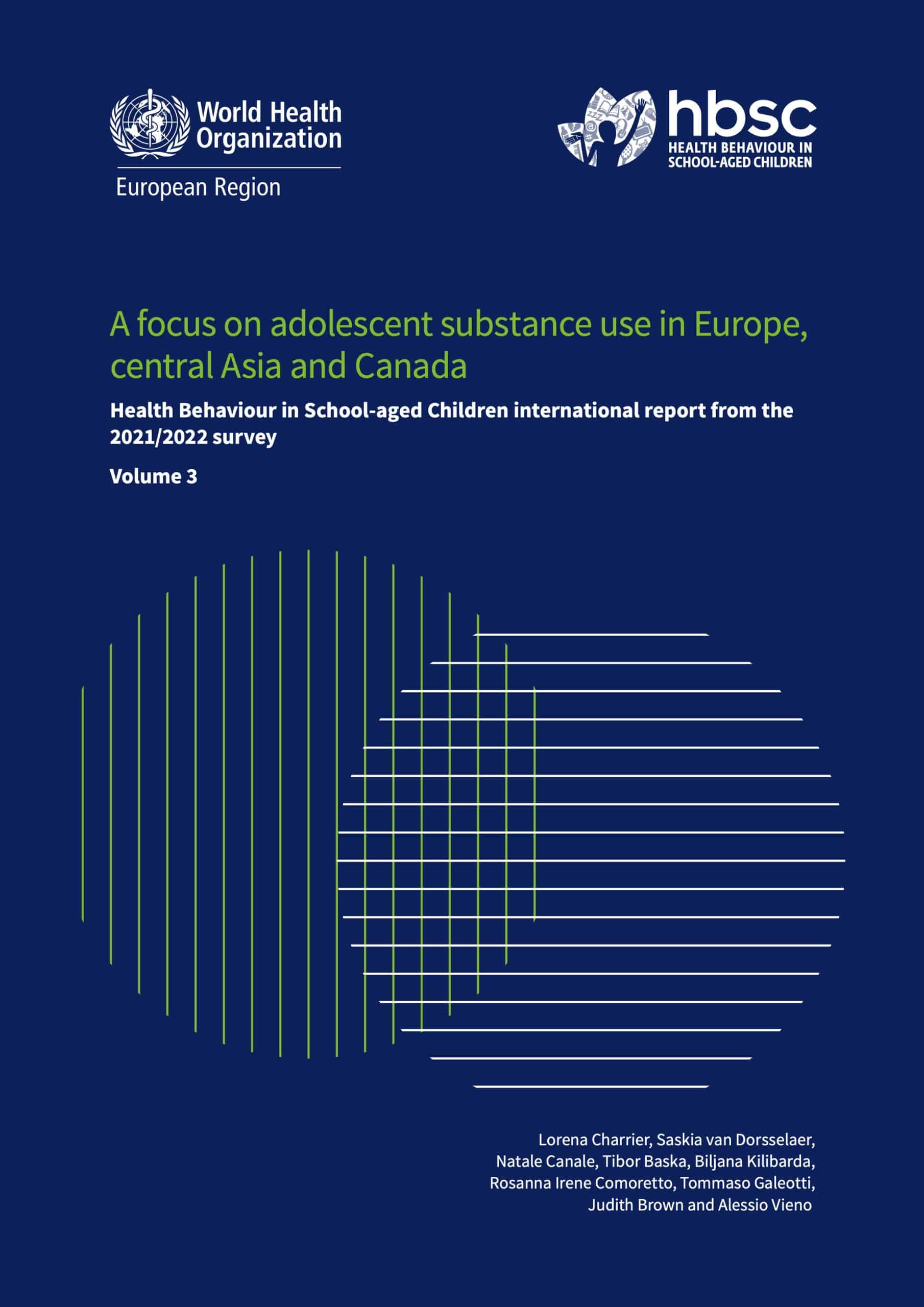Topic
Substance use
Adolescence is a time of experimentation and risk-taking, and the introduction to substances like alcohol, tobacco, e-cigarettes, and cannabis can have lasting consequences. Understanding the prevalence, patterns, and factors influencing substance use in young people is critical for developing effective prevention and intervention strategies.
This section of the HBSC study investigates the prevalence and frequency of adolescent substance use, including both lifetime and recent use of various substances. By examining these trends, we can gain insights into the factors that contribute to substance use and inform efforts to promote healthy choices and reduce the harms associated with substance use in this population.
Select one of the indicators below to view data.
Key Findings
A focus on adolescent substance use

- Adolescents’ current use of all substances (except cannabis, questions on which were presented only to 15-year-olds) increased sharply with age in almost all countries and regions.
- Substance use was generally higher in boys than girls at age 11, while the gender gap tended to narrow or disappear from age 13.
- A quarter of 15-year-olds had smoked in their lifetime, and 15% had smoked at least once in the past 30 days.
- More than 30% of 15-year-olds had used electronic cigarettes (e-cigarettes) during their lifetime and 20% had used them in the past 30 days.
- Lifetime alcohol use was reported by 57% of 15-year-olds and past-30-day use by just under 40%, with higher prevalence in girls.
- One in five 15-year-olds had been drunk at least twice in their lifetime, with no significant gender differences in most countries and regions.
- The prevalence of both lifetime and current cannabis use was higher among boys than girls at age 15 (13% versus 11% for lifetime use and 8% versus 5% for current use).
- Between 2018 and 2022, there was an overall increase in current alcohol use and drunkenness among older girls. In contrast, a decrease in alcohol use was observed among 15-year-old boys.
- A decrease in current smoking since 2018 was also observed among 15-year-old boys.
- Socioeconomic differences in substance use varied by substance type. Cigarette smoking showed higher prevalence among adolescents from low-affluence families, while e-cigarette use, alcohol consumption and drunkenness were more prevalent among high-affluence adolescents.
- Data from the 2022 survey confirm wide variability in substance use among countries and regions.
Cite this data
Charrier L, van Dorsselaer S, Canale N, Baska T, Kilibarda B, Comoretto RI et al. A focus on adolescent substance use in Europe, central Asia and Canada. Health Behaviour in School-aged Children international report from the 2021/2022 survey. Volume 3. Copenhagen: WHO Regional Office for Europe; 2024. Licence: CC BY-NC-SA 3.0 IGO
Youth Commentary
“I think the biggest health concern facing young people today is vapes. I think that they should either make vapes less accessible, take the nice flavours out of them, or ban them.”
Girl, Ireland
Explore topics
Mental health
Bullying & violence
Substance use
Physical activity
Eating behaviours
Obesity & body image
Sexual health
Social media
Social contexts
Sign up for updates
Be among the first to access new international reports from the Health Behaviour in School-aged Children (HBSC) study, featuring 2021/22 data.
Complete the form to join our email alert list and receive notifications as soon as new reports are available. You can unsubscribe at any time by replying to one of our emails.
By clicking ‘Sign up’ you agree to receive email notifications about new HBSC study reports. For information about how we handle your data, please check our privacy policy.